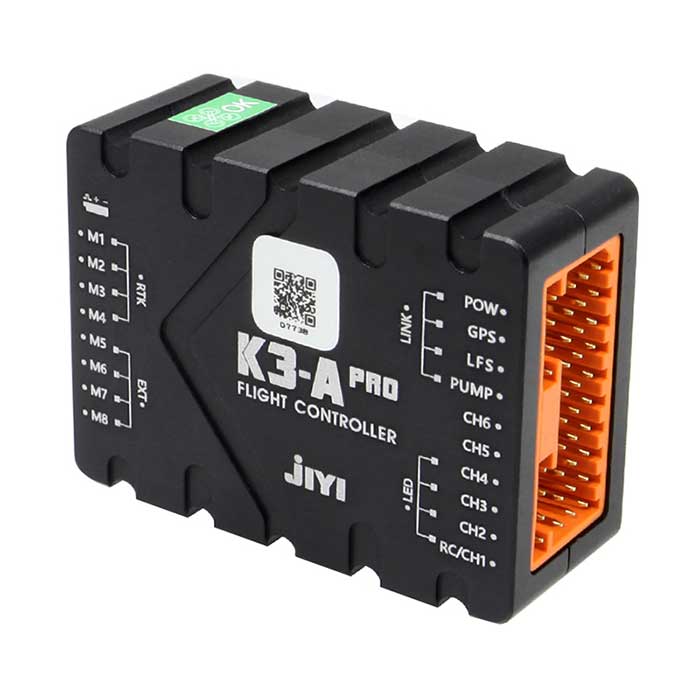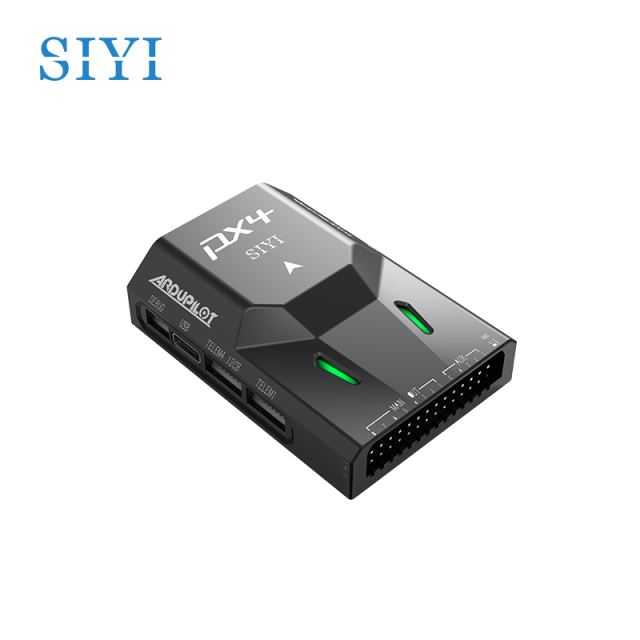SparkNavi Drone Flight Controller and GNSS/INS Made in Taiwan: Cutting-Edge Solutions for UAVs
SparkNavi Drone Flight Controller and GNSS/INS Made in Taiwan: Cutting-Edge Solutions for UAVs
Blog Article
Checking Out the Duty of Drone Trip Controllers in Enhancing Flight Security and Navigating Effectiveness
The improvement of drone technology has substantially raised the relevance of flight controllers, which function as the brain of these aerial vehicles. By integrating real-time information from a range of sensors, trip controllers enhance flight security and navigating effectiveness, making sure that drones can operate smoothly even in complicated atmospheres. This conversation will check out the essential components that add to these enhancements, along with the effects for the future of autonomous flight. What technologies lie ahead that could additionally transform the capabilities of drone flight controllers?

Comprehending Flight Controllers
Flight controllers are indispensable elements in the functioning of drones, functioning as the minds that handle and support flight procedures. These sophisticated devices procedure information from different sensing units, including accelerometers, gyroscopes, and GPS, to ensure that the drone maintains its desired flight course. The trip controller translates this data and implements commands based upon pre-defined algorithms, enabling the drone to react to environmental adjustments, such as wind or barriers.
The main feature of a flight controller is to maintain security throughout trip. It achieves this by making real-time changes to the drone's electric motors and control surfaces, making sure balance and control. Furthermore, contemporary trip controllers incorporate sophisticated features such as waypoint navigating, enabling automated trip paths and enhanced operational effectiveness.
Recognizing the style of trip controllers is essential for both enthusiasts and specialists. They commonly include a microcontroller, firmware, and different user interfaces for sensing unit input and interaction. As technology breakthroughs, flight controllers have actually ended up being a lot more portable and capable, incorporating expert system to enhance decision-making processes and adjust to complex trip scenarios. This advancement signifies an essential development in the drone sector, leading the method for more sophisticated applications and safer procedures.
Key Elements of Trip Stability
Accomplishing optimum flight security in drones depends on several crucial components that operate in performance to guarantee smooth and controlled procedures. Central to this stability is the trip controller itself, which processes information from different sensors to keep the desired flight perspective. This consists of accelerometers and gyroscopes that measure activity and alignment, permitting real-time adjustments to the drone's position.
An additional critical part is the digital speed controllers (ESCs), which manage the power delivered to the motors. By finely tuning motor speeds in feedback to flight controller commands, ESCs aid preserve balance and counteract disturbances brought on by wind or sudden activities.
Additionally, the style of the drone's framework plays an essential duty in flight security. A well-structured frame lessens vibrations and boosts the total wind resistant account, adding to smoother trip qualities. The assimilation of innovative formulas within the flight controller aids in anticipating modifications, making certain a responsive and versatile trip experience.
With each other, these components create a cohesive system that improves a drone's stability, permitting accurate handling and improved efficiency in various trip conditions.
Navigation Efficiency Methods
Efficiency in navigation is crucial for maximizing drone procedures, especially in intricate environments. Efficient navigation strategies improve the ability of drones to go across challenging terrains and avoid challenges, consequently improving operational performance and security.
One noticeable strategy is the application of advanced GPS and inertial measurement units (IMUs) that give precise place monitoring and orientation data. These innovations allow drones to determine ideal trip courses in real-time, considering different variables such as wind problems and possible obstacles.
An additional method entails the usage of algorithms for path planning and optimization. Formulas such as A * and Dijkstra's formula can be deployed to determine one of the most efficient course while decreasing energy intake and trip time. Integrating maker discovering models can enable drones to adaptively find out from their atmospheres, enhancing navigating capabilities via experience.

Influence on Autonomous Drones
The assimilation of sophisticated navigating techniques has actually exceptionally transformed the abilities of autonomous drones, enabling them to operate with greater autonomy and precision. SparkNavi drone flight controller and GNSS/INS made in taiwan. These improvements are mostly attributed to sophisticated trip controllers that use real-time information processing and sensing unit combination, enabling drones to browse complex atmospheres perfectly
The effect on autonomous drones extends past plain navigating; it encompasses boosted barrier avoidance, improved stability throughout dynamic problems, and increased objective reliability. By leveraging algorithms that incorporate machine knowing and artificial knowledge, drones can adapt to changing conditions, making educated decisions that maximize their flight paths while minimizing dangers.
Additionally, the execution of robust trip controllers has promoted the execution of complicated jobs, such as airborne evaluations, delivery services, and farming tracking, with minimal human treatment. This capability not only improves operations however additionally reduces human error, consequently enhancing overall security.
Therefore, the operational scope of independent drones has expanded significantly, making them essential devices in various markets. Their capacity to do successfully in diverse situations highlights the critical duty that progressed flight controllers play fit the future of unmanned airborne systems.
Future Trends in Flight Control
Regularly, developments in flight control technology are positioned to redefine the landscape of drone procedures in the coming years. Emerging patterns suggest a substantial change in the direction of boosted expert system (AI) assimilation, allowing flight controllers to process real-time data a lot more effectively. This development will promote enhanced decision-making capacities, allowing drones to adapt to dynamic environmental conditions autonomously.
In addition, the implementation of device knowing algorithms is expected to boost anticipating maintenance, therefore lessening downtime and extending the lifecycle of drone parts. This aggressive technique to upkeep will certainly be important as drone applications expand across various industries, from farming to logistics.

.png)
Finally, advancements in safe interaction methods will certainly address safety and security and governing concerns, our website ensuring that drones can operate effortlessly in stuffed airspaces (SparkNavi drone flight controller and GNSS/INS made in taiwan). Jointly, these fads point in the direction of a future where flight control systems are not just smarter and much more efficient however additionally capable of running safely in an increasingly incorporated airspace
Conclusion
To conclude, drone flight controllers are integral to enhancing flight stability and navigation effectiveness via the sophisticated handling of sensing unit data. By maintaining ideal flight perspectives and employing innovative formulas for path optimization and challenge avoidance, these controllers dramatically add to the autonomy and operational safety of drones. As modern technology continues to advance, better advancements in flight control systems are expected, promising better performance and expanded capacities in the realm of unmanned airborne cars.
By incorporating real-time data from a range of sensing units, trip controllers enhance trip stability and navigation effectiveness, making certain that drones can operate efficiently also in complex atmospheres.Flight controllers are integral elements in the performance of drones, offering as the brains that maintain and take care of trip operations. In addition, modern flight controllers incorporate innovative functions such as waypoint navigation, enabling for automated flight paths and boosted operational effectiveness.
Central to this security is the trip controller itself, which refines data from various sensing units to keep the wanted trip perspective.In final thought, drone flight controllers are integral to improving trip security and navigation performance like it through the advanced processing of sensor information.
Report this page